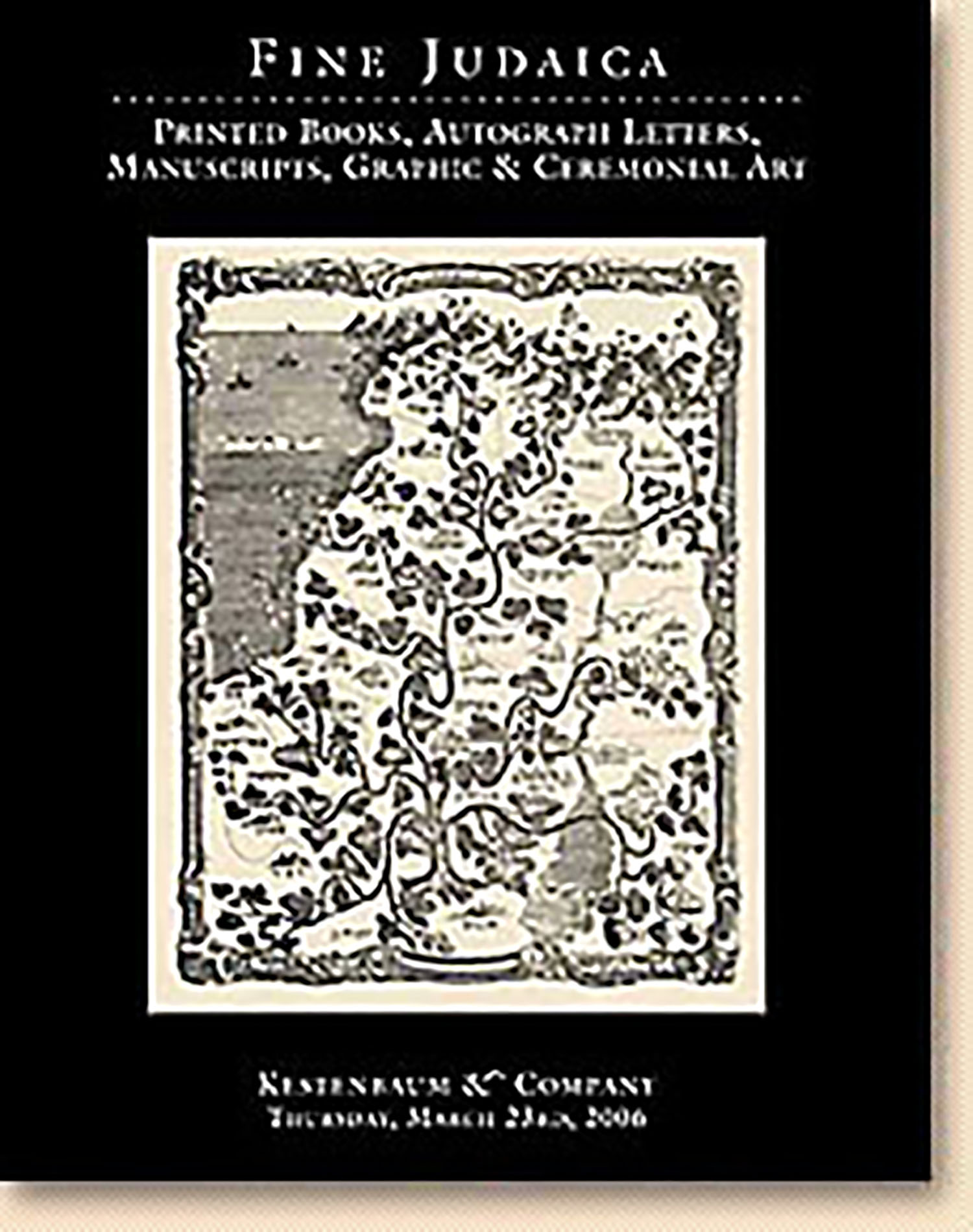(RaM”A). Zoth Torath ha-Chatath. With Hilchoth Nidah by Joseph Karo, accompanied by glosses of the RaM”A

AUCTION 32 |
Thursday, March 23rd,
2006 at 1:00
Fine Judaica: Printed Books, Autographed Letters, Manuscripts, Graphics and Ceremonial Art
Lot 148
ISSERLES, MOSES.
(RaM”A). Zoth Torath ha-Chatath. With Hilchoth Nidah by Joseph Karo, accompanied by glosses of the RaM”A
Cracow: Yitzchak Prostitz 1569
Est: $12,000 - $15,000
PRICE REALIZED $28,000
THE FIRST HALACHIC WORK BY THE RaM”A.
R. Moses Isserles, born in Cracow circa1525, was regarded among his contemporaries as the “Maimonides of Polish Jewry.” The RaM”A was a world-class decisor, consulted by the great rabbis of his time on halachic matters. Among those who corresponded with him were Meir Katzenellenbogen, Joseph Karo, Solomon Luria and his brother-in-law, Joseph Katz. See EJ, IX cols.1081-85.
The Torath ha-Chatath is one of the most important Codes concerning dietary and menstrual laws. Its importance lies in the fact that it includes the customs of Eastern and Central Europe which in many cases differ from the rulings of R. Joseph Karo in his Shulchan Aruch. The RaM”A generally leaned toward Polish custom. This attitude irked many of his peers, especially R. Chaim b. Betzalel, the brother of the Mahara"l of Prague, who criticized him severely in his Vikuach Mayim Chaim. Other critical notes were penned by the author of Tosfoth Yom Tov, R. Yom Tov Lipman Heller, under the title Torath ha-Asham. Despite the criticism of his colleagues, the RaM”A’s decisions were accepted worldwide by Ashkenazic authorities, many citing the adage: “Kol Yisrael yotzim be-yad RaM”A” (a play on words referring to the Jews who were liberated from Egypt with an “outstretched hand”)
